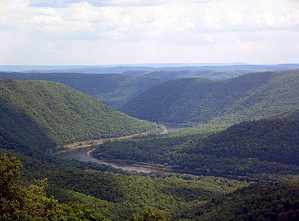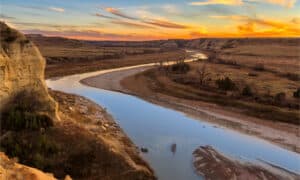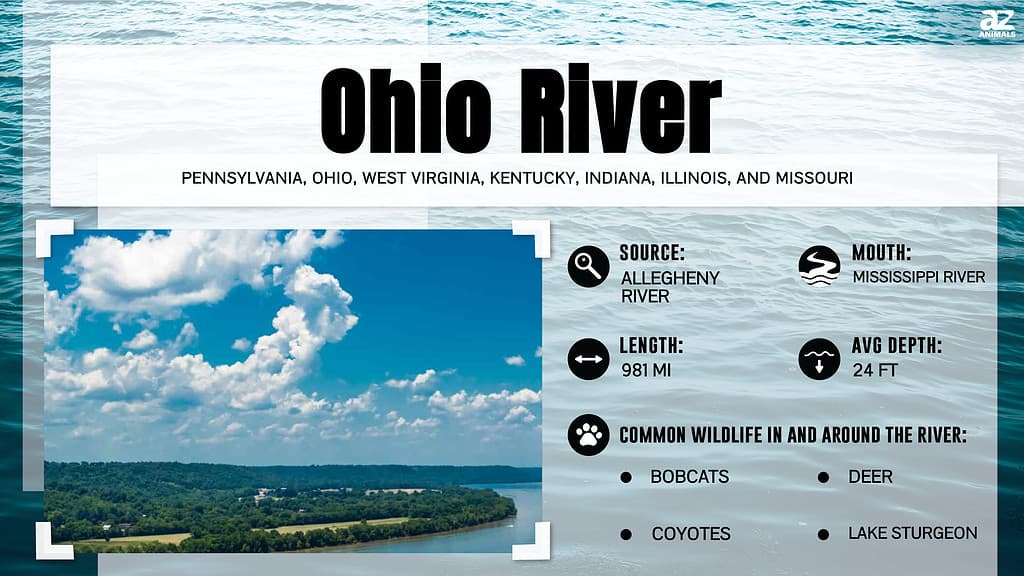
The Ohio River flows across six states, and its basin spreads over 14 different states. As with most waterways, this one also supports many cities and a thriving commercial shipping industry that contributes significantly to the states’ economies through which the river flows.
Besides this, the Ohio River sustains a vast selection of wildlife, with some animals on endangered and protected lists. So, if the Ohio River and its tributaries flow across 14 states, where does the Ohio River start?
Five Cool Facts About the Ohio River
The Ohio River is one of the major rivers in the United States. It flows over 981 miles from Pittsburgh, Pennsylvania to Cairo, Illinois, where it meets the Mississippi River. This historic river has played a significant role in the development of the region and continues to be an important resource today.
With that said, here are some cool facts about the Ohio River:
- The Ohio River consists of the Allegheny and Monongahela Rivers in Pittsburgh, Pennsylvania.
- The Ohio River flows through the borders of six different states: Kentucky, Ohio, Indiana, Pennsylvania, and West Virginia.
- The Ohio River is the source of drinking water for over five million people in many different areas.
- More than 25 million people live along the Ohio River Basin.
- There are actually 20 dams on the Ohio River.
Where Does the Ohio River Begin?
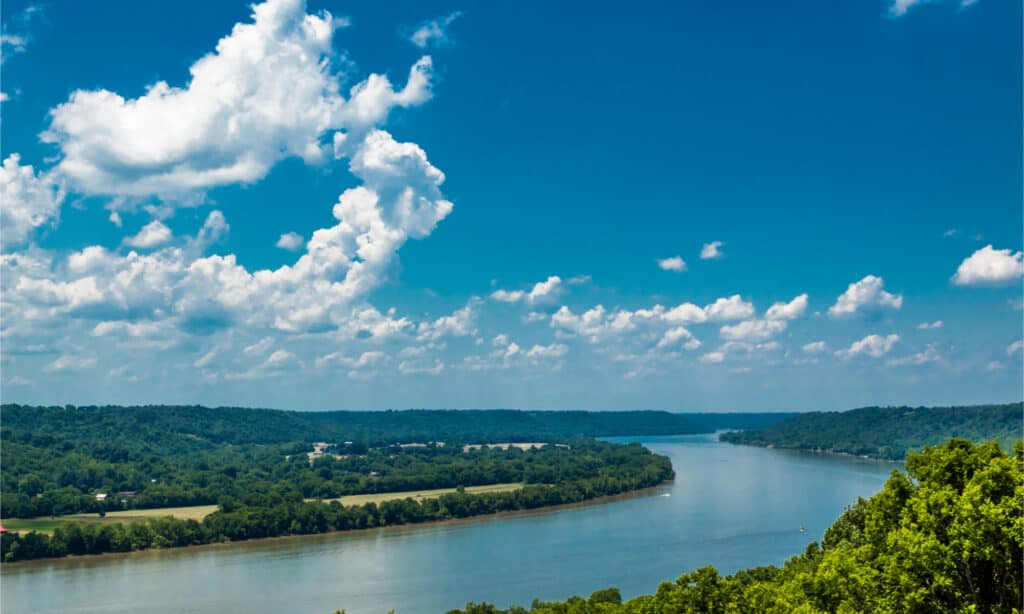
Where does the Ohio River Start? The Ohio River begins at the confluence of the Allegheny and Monongahela Rivers.
©Corey B Stevens/Shutterstock.com
The headwaters of the Ohio River are at the confluence of the Allegheny and the Monongahela Rivers at Point State Park in Pittsburgh, Pennsylvania. The Ohio River then flows for 981 miles and ends in Cairo, Illinois. The Ohio River ends by flowing into the Mississippi River and is one of its many tributaries.
Where is the Ohio River Located on a Map?
The Ohio River passes through six U.S. states in total. Do you wonder what it would look like on a map? Here’s a glimpse of it below. Zooming in will make it more detectable, but check out the meandering dotted line that travels southwest from Cincinnati for an idea.
The Course of the Ohio River
After forming at the confluence of the Allegheny and Monongahela Rivers, the Ohio River flows through the Allegheny and Beaver counties. Next, it courses through the West Virginia–Ohio–Pennsylvania triple-state line before forming the border between West Virginia and Ohio.
At this point, it flows until it reaches Cincinnati and eventually forms the border of West Virginia and Kentucky. Its path also includes the borders of Ohio, Indiana, and Illinois. Finally, the Ohio River ends and empties into the Mississippi River in Cairo, Illinois.
The Ohio River Enters Six States
The Ohio River begins in Pennsylvania and eventually ends in Illinois. The other four states in which the river flows are:
- Indiana
- Kentucky
- Ohio
- West Virginia
The Ohio River Basin Covers 14 States
The Ohio River’s drainage basin spans 205,000 square miles. Despite the river only crossing six states, its basin spreads across 14 states. In reality, the river basin covers roughly 5% of the U.S. mainland, including many of the southeastern states and eastern sections of the Mississippi basin. The 14 states that the Ohio River basin covers include:
- Illinois
- Indiana
- Ohio
- New York
- Pennsylvania
- Maryland
- West Virginia
- Kentucky
- Tennessee
- Virginia
- North Carolina
- Georgia
- Alabama
- Mississippi
Although Maryland, Virginia, and North Carolina lie to the east of the Appalachian Mountains Continental Divide, the Ohio River basin still makes small inroads into these states. Notably, a small strip on the western border along the Youghiogheny River enters Maryland. The Ohio River basin covers much of southwest Virginia and the western part of North Carolina.
Ohio River – Width and Depth
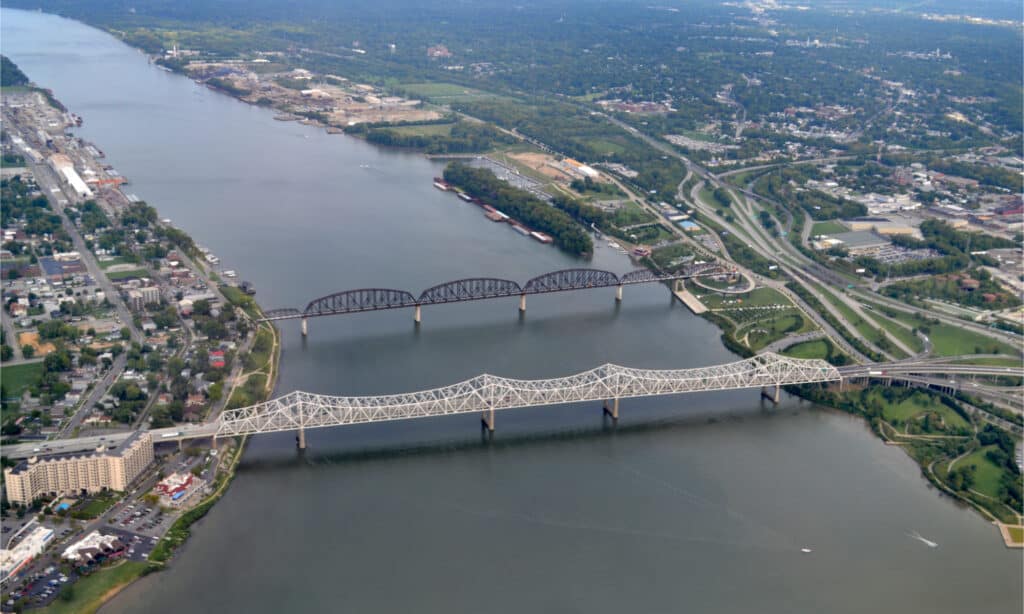
The average width of the Ohio River is narrow at about half a mile.
©jessica.kirsh/Shutterstock.com
The average width of the Ohio River is narrow at about half a mile, but its widest point reaches roughly one mile. This point is at the Smithland Dam in Kentucky. Also, the Ohio River’s depth varies, with many parts differing due to human intervention in the form of dam construction.
On average, though, the Ohio River’s depth is 24 feet, with the deepest point of the river being 168 feet near Louisville, Kentucky. This Louisville area is also where many large shipping vessels travel up and down the Ohio River.
The Ohio River and Its Economy
Just as the Ohio River starts in a specific area, it also gives life and leads to the spouting of many major cities near its banks. Many of these major cities include:
- Pittsburgh in Pennsylvania
- Cincinnati in Ohio
- Louisville in Kentucky
- Evansville in Indiana
- Huntington in West Virginia
Cincinnati, Louisville, and Pittsburgh are home to the main ports of the river. Also, because the Ohio River is almost 1,000 miles long, it is a significant transportation route for the states through which it courses. Besides, the Ohio River has a stable flow of water and only has one major obstacle, the Falls of Ohio close to Louisville.
As a result, authorities have built locks at the falls, controlling the descent and navigation of ships past the falls for commerce. Other than the falls, there are 13 dams and locks along the river, ensuring the smooth travel of vessels for longer distances. Ships transport coal, oil, steel, gravel, petroleum products, and manufactured goods up and down the Ohio River.
Wildlife Along the Ohio River
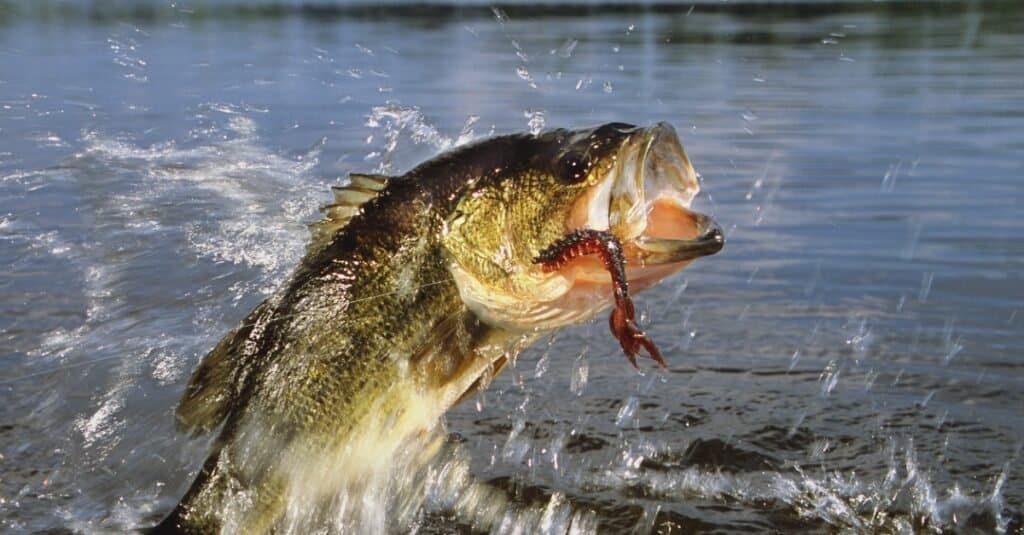
The Ohio River is home to various endangered species
©iStock.com/stammphoto
Fishing is a popular activity on the Ohio River. Anglers catch a selection of fish like largemouth bass, smallmouth bass, rock bass, black bass, white bass, striped bass, sauger, walleye, blue catfish, channel catfish, and flathead catfish.
Bass are common in creeks during the spring and in deeper water during the summer. Sauger and walleye live in the tailwater areas during the spring, fall, and winter and in streams during the summer. Catfish are another species that make the Ohio River their home.
What Animals Live in and Around the Ohio River?
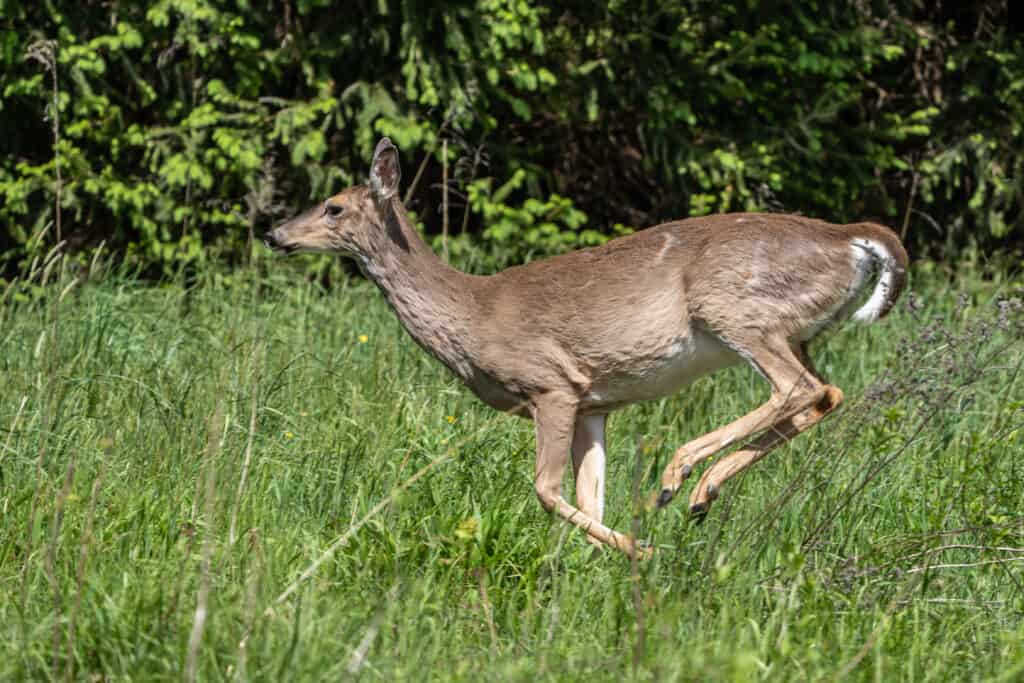
White-tailed deer can be found close to the Ohio River
©Amy Lutz/Shutterstock.com
The Ohio River is where various endangered animals and wildlife live. Several endangered birds you can spot along the Ohio River include the Kirtland’s warblers and piping plover. An endangered fish that you can find in the Ohio River is the Scioto madtom. The Ohio River is also home to threatened marine life like club shell mussels, fan shell mussels, northern rifle shell mussels, and the pink mucket pearly mussel.
Mussels live throughout the Ohio River, with 45 different species of native freshwater mussels making this river their breeding grounds. These shellfish filter the river’s water and reduce silt, sediment, and pollutants in the river’s water as they feed.
You might also be lucky to spot two official state animals on the Ohio River. One is the spotted salamander, the official state amphibian of Ohio. Spotted salamanders live in woodlands around creeks, swamps, and ponds. The second is the bullfrog, the official state frog of Ohio. This frog is the largest in the U.S. and lives in ponds, slow streams, and marshes.
Mammals also live along the Ohio River. For instance, the carnivorous North American black bear lives along the Ohio River. This bear is known to hunt fish and other mammals and could attack humans, so be careful if you spot one. You might also see the white-tail deer here, the official state mammal of Ohio, with a population of over 600,000.
The photo featured at the top of this post is © Nat Chittamai/Shutterstock.com
Thank you for reading! Have some feedback for us? Contact the AZ Animals editorial team.



